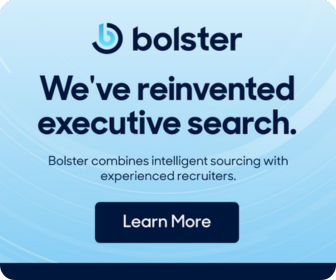
Startup Boards for CXOs Series: Post 3 of 11
I’m often asked by accomplished executives how to get on a board and I always tell them that one of the best ways to build your “board readiness” skills is to get in the game. An advisory board role is an excellent way to do that. An advisory role is (usually) a low-risk way to understand early-stage companies, it’s a way for you to hone your skills in pattern matching, and it opens doors for you to network more broadly within the ecosystem of the company you’re dealing with. If you’re ever invited to join a company’s advisory board (however formal or informal it is), it’s worth strong consideration. However, not all advisory boards are created equal and you’ll have to do some digging to figure out whether an advisory role is good preparation for a board of directors role, or whether it’s a waste of time.
What are the things you should look for?
One of the first things to look for are the telltale signs that the advisory board is taken seriously by the CEO, that it’s not a figurehead group in name only. Does it have a mission and list of roles to help the CEO achieve that mission? Does it function as a team, with regular meetings, minutes, and action items? If the advisory board doesn’t have a mission and if it doesn’t meet regularly then it’s likely that you’ll be called on to advise on specific issues. That situation carries a risk that you won’t hear the full story of what’s going on and other advisors’ perspectives. You can be very helpful to a CEO in this way, but it’s not necessarily great preparation for a board of directors role. Instead, it’s closer to an executive coaching role.
You should also look at the list of roles identified that will make up the advisory board. Is everyone on the advisory board a CEO or is the CEO looking to fill roles with functional or domain experts? You’ll get a much richer experience with a diverse group of people on the advisory board, and the CEO who tries to fill their advisory board with people from multiple backgrounds–like technical, sales, industry, customer, or business experience–indicates that they are viewing the advisory board as a strategic asset.
Another way to understand whether the advisory board is taken seriously is to look at how you’re recruited. Is it a formal process or informal? Did you receive an email or phone call with the informal “Hey, I’d like you to join my advisory board?” Or did the CEO reach out to you more formally by asking, “I would like to see if you have interest in joining my advisory board and if so, if we could schedule a time for an interview.” On a side note, I have an upcoming post on how to interview for a board role which also applies to an advisory board role, but the main point is that asking to interview you for a spot is a sign that the CEO sees the advisory board as something they care about, something they want to build.
When I first started at Return Path I asked a ton of people to be advisors and gave them some option grants hoping that they’d take my call when I needed them. I also hoped that they’d send talent or customers my way. It never worked out because I didn’t do a great job of constructing advisors as a group or board, the advisors weren’t able to provide value or gain experience as being advisors, and I didn’t get the value I wanted from them in the end. At Bolster I’m doing the opposite: I have a small number of people on my advisory board, I have high expectations for them, I hold them accountable, and I spend a lot of time with each person, share a lot of communications and plans with them. I also periodically convene some or all of them for a group discussion. In some ways, this group is even more helpful than my board on strategy and operational details since they are all hand selected for very specific industry and functional experience and aren’t burdened by governance or oversight issues. Hopefully my advisory board feels that they are adding significant value to the company, are learning from each other and me, and having a valuable experience.
Typically, there is limited interaction between a company’s formal Board of Directors and its advisors (even a formal Advisory Board), but that will vary from one company to the next. It’s also true that in many cases, CEOs use their Advisory Board as a bit of a training or proving ground for appointments to their Board of Directors down the road.
How do you find advisory board opportunities? Besides being a member of Bolster, there are other websites that help companies connect with advisors and form advisory boards, such as Advisory Cloud. You can also seek them out proactively by looking on websites of companies you like and see what kind of profiles are included on their advisory boards and getting in touch with them directly or via your network.
So when it comes to building skills to be on a board of directors, don’t overlook an advisory board, but don’t immediately say “yes” when asked to be on an advisory board. They all take time, and you want to make sure you’re investing your time wisely. There are good and bad advisory boards and the good ones are very much like a Board of Directors. They meet as a team on a regular basis, they have responsibilities, they’re held accountable, and the CEO takes a genuine interest in the advisory board and actively manages it for greater impact.
- Matt Blumberg, February 26, 2021
